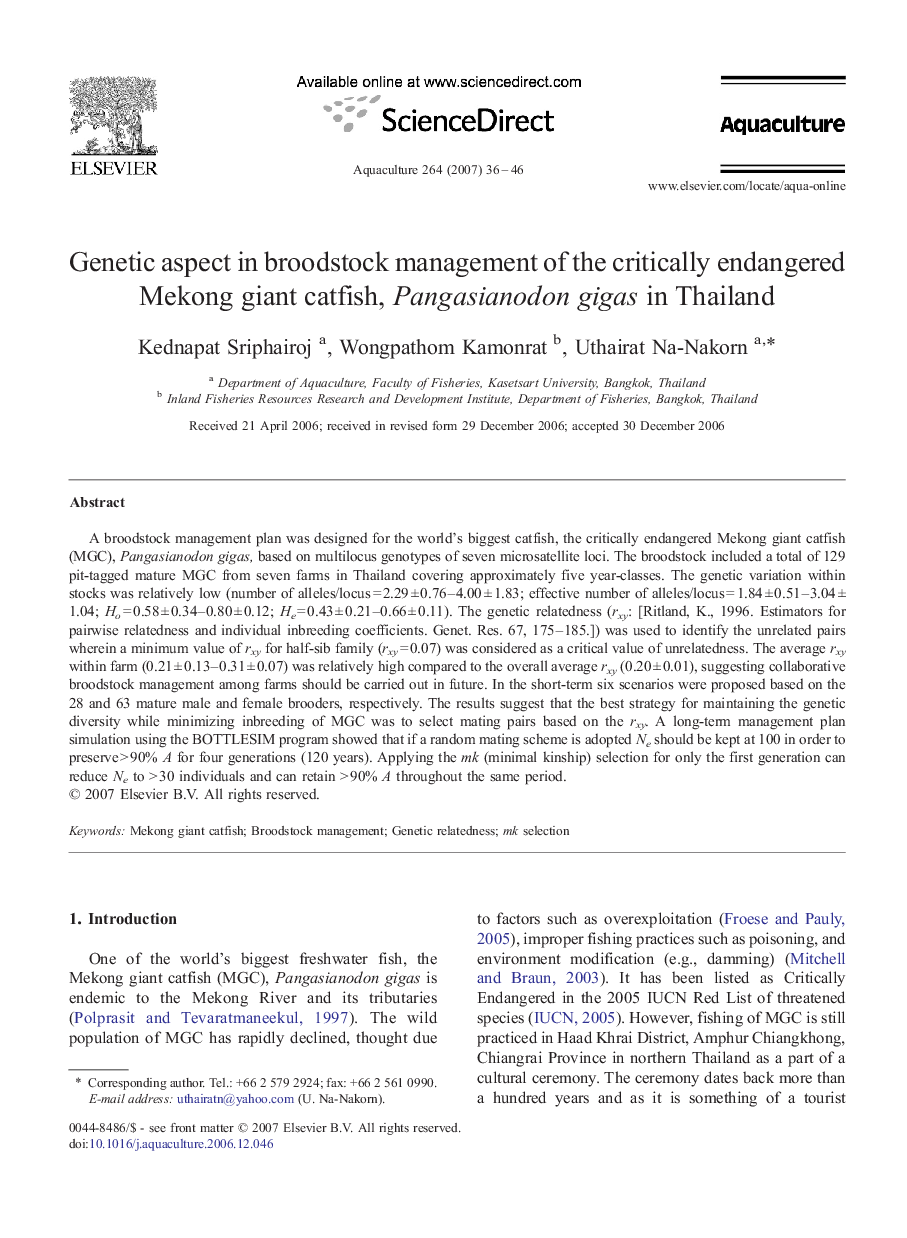| کد مقاله | کد نشریه | سال انتشار | مقاله انگلیسی | نسخه تمام متن |
|---|---|---|---|---|
| 2425360 | 1552978 | 2007 | 11 صفحه PDF | دانلود رایگان |

A broodstock management plan was designed for the world's biggest catfish, the critically endangered Mekong giant catfish (MGC), Pangasianodon gigas, based on multilocus genotypes of seven microsatellite loci. The broodstock included a total of 129 pit-tagged mature MGC from seven farms in Thailand covering approximately five year-classes. The genetic variation within stocks was relatively low (number of alleles/locus = 2.29 ± 0.76–4.00 ± 1.83; effective number of alleles/locus = 1.84 ± 0.51–3.04 ±1.04; Ho = 0.58 ± 0.34–0.80 ± 0.12; He = 0.43 ± 0.21–0.66 ± 0.11). The genetic relatedness (rxy: [Ritland, K., 1996. Estimators for pairwise relatedness and individual inbreeding coefficients. Genet. Res. 67, 175–185.]) was used to identify the unrelated pairs wherein a minimum value of rxy for half-sib family (rxy = 0.07) was considered as a critical value of unrelatedness. The average rxy within farm (0.21 ± 0.13–0.31 ± 0.07) was relatively high compared to the overall average rxy (0.20 ± 0.01), suggesting collaborative broodstock management among farms should be carried out in future. In the short-term six scenarios were proposed based on the 28 and 63 mature male and female brooders, respectively. The results suggest that the best strategy for maintaining the genetic diversity while minimizing inbreeding of MGC was to select mating pairs based on the rxy. A long-term management plan simulation using the BOTTLESIM program showed that if a random mating scheme is adopted Ne should be kept at 100 in order to preserve > 90% A for four generations (120 years). Applying the mk (minimal kinship) selection for only the first generation can reduce Ne to > 30 individuals and can retain > 90% A throughout the same period.
Journal: Aquaculture - Volume 264, Issues 1–4, 6 April 2007, Pages 36–46